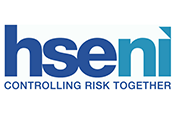Avoid slips and trips in the workplace
Guide
Although they might not sound serious, slips and trips account for a third of all major injuries reported in the workplace. But the good news is that slips and trips can be easily prevented. By carefully assessing the risks of slips and trips in your workplace you can take common-sense steps to reduce them:
- Assess the risks - You must assess the risks of slips and trips as part of your overall health and safety risk assessment. See health and safety risk assessment.
- Spillages - ensure spillages are cleaned up immediately with suitable cleaning agents. Make sure staff know where these are kept and how to use them. Do not let people walk on the floor unless it is clean and dry. Arrange an alternative route, use barriers and as a last resort use signs.
- Flooring - make sure flooring is appropriate for the work environment. Think carefully when choosing flooring, especially if it may become wet. Check floors for tears or cracks that might cause a trip. Ensure mats are securely fixed, and free from curling edges.
- Lighting - ensure potentially hazardous or slippery areas are well lit. Are there areas where lighting can be added or improved or where lights need to be repositioned?
- Slopes and changes of level - consider how you could improve visibility in these areas. Similarly, is it obvious where there is any change from dry to wet surfaces? Consider using warning signs and providing doormats.
- Cables - don't leave cables trailing on the floor. Use a cable tidy, or move the equipment away from pedestrian areas. Make sure computer cables are properly stowed.
- Refurbishment and repairs - make sure tools, containers, rubble and power cables don't create a hazard. Maintain flooring and lighting.
- Cleaning - check cleaning methods and equipment are suited to the surface being cleaned and staff are trained to use equipment. Ensure the floor is completely dry before you allow anybody to walk on it. It is a good idea to use a second dry mop to dry the floor. Use cordons or signs to indicate where floors may be wet or slippery.
- Footwear - encourage employees to wear suitable footwear. If they need to wear slip-resistant footwear in areas that are particularly hazardous, such as kitchens, you must provide this free of charge. See personal protective equipment.
- Duties of staff - stress to employees that they have a duty to protect their colleagues' health and safety at work. They should an eye out for possible dangers and report them immediately.
- Visitors - consider if you need to take extra measures to protect the public, customers or suppliers. Would signs help to warn them of areas where they could slip or trip?
- Good housekeeping - remove obstructions from pedestrian routes. If you can't remove an obstruction, consider using signs to warn of the hazard. Dispose of rubbish regularly.
- HSENI Helpline0800 032 0121
Actions
Also on this site
Developed with:
